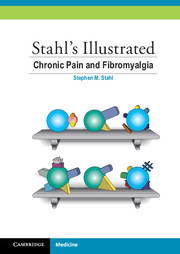Chapter 6 - Monitoring and Caring for Patients in Pain
Published online by Cambridge University Press: 19 October 2021
Summary
Chapter 1 presented the profound impact that pain has on our patients and their families, our society, and even our government. Chapters 2-5 have presented just the fundamentals of the necessary knowledge to treat and manage patients with pain. Whereas understanding the neurobiology of pain, particular pain disorders, and mechanisms of drugs that effectively treat pain are the tools, the appropriate application of these tools is what truly leads to successful treatment of pain disorders. Chapter 6 presents suggestions for applying the tools presented in Chapters 2-5, including perspectives to remember when interacting with the patient as well as legal issues involved in treating pain, both of which have provided a great deal of controversy over the years. By incorporating the guidelines from Chapter 6 with the knowledge from Chapters 2-5, clinicians can begin to mitigate the difficulties presented in Chapter 1.
Some precautionary measures can do wonders to prevent litigation in the case of an adverse outcome. These include keeping good records, establishing good patient rapport and communication, and avoiding words that imply negligence or blame.
In the case of litigation, patient non-compliance is a factor that can increase the chances of a positive legal outcome for the clinician. Non-compliance is more likely in the case of psychiatric disorders or drug effects (i.e., drowsiness, confusion) that inhibit the patient's understanding of a drug regime. Likelihood of non-compliance is also increased if the patient has financial difficulties paying for treatment, or if there is no caretaker. Substance abuse is also a form of non-compliance. In the case of non-compliance, the clinician should be sure to keep good records and use more caution in the case of increased risk factors.
Upon recognition, pain disorders should be treated as a chronic disease rather than an acute illness. This includes addressing symptoms holistically and simultaneously (e.g., physical, psychosocial, behavioral). Generally, an integrated care system will be more effective. Progress can be measured in terms of function and physical activity while reducing pain itself.
Other methods that have garnered moderate evidence include strength training, hypnotherapy, biofeedback, and balneotherapy. Methods that have received weak support include acupuncture, chiropractics, manual and massage therapy, electrotherapy, and ultrasound. There is no evidence that tender (trigger) point injections or flexibility exercise have efficacy in treating chronic pain disorders.
- Type
- Chapter
- Information
- Stahl's Illustrated Chronic Pain and Fibromyalgia , pp. 123 - 130Publisher: Cambridge University PressPrint publication year: 2009

